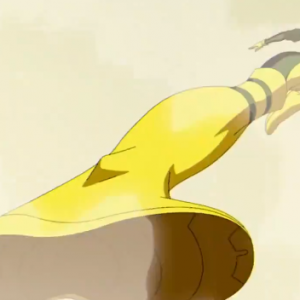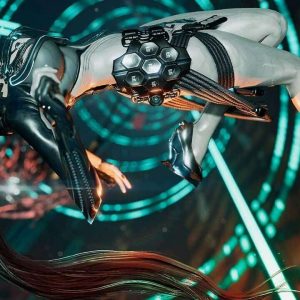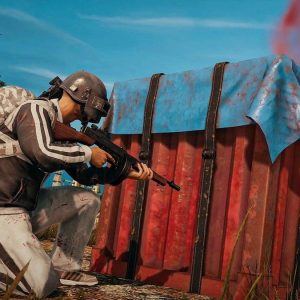Since it was announced way back in 2012, the gaming community has been eager for all the info on Cyberpunk 2077 it can get. We finally got our first look at CD Projekt Red’s upcoming sci-fi adventure at last year’s E3, but there’s still a lot we don’t know about life in the world of its Dark Future… until now, at least.
R. Talsorian Games, the creators of the original Cyberpunk tabletop RPG, has recently released the “Jumpstart Kit” for Cyberpunk Red, the latest version of the TRPG which brings the setting out of the 2020s and into the 2040s, and it offers some excellent insight into what we might expect from the world of Cyberpunk 2077 once it’s released next year.
The Time of the Red
Before we can get into how it affects 2077, it’s important to establish the state of the world in Cyberpunk Red.
“We’ve always tended, at Talsorian, to look at the Cyberpunk series as though it’s a comic book,” explains franchise creator Mike Pondsmith. “And you know how comic books reset, have arcs, have changes, and so forth… In a roleplaying game, at some point characters and situations will become static. Our side becomes too powerful to stop, players become too powerful to stop. So you have to reset, but you have to find a smart way to do it.”
CP Red is set around the mid-2040s, approximately 32 years before the events of Cyberpunk 2077. Night City, where 2077 takes place (along with most of the other events in the Cyberpunk universe), was decimated at the end of what’s known as the Fourth Corporate War, which was a globe-spanning armed conflict between two of the largest corporations (MegaCorps) on the planet: MiliTech and Arasaka Security.

The war ended rather abruptly when, in 2023, MiliTech detonated a small nuclear bomb inside Arasaka’s Night City headquarters. The resulting debris, dust, and radioactive fallout (along with a host of other chemicals and residue from the war’s use of sub-orbital weapon strikes) swirled up into the atmosphere, casting an eerie red pall over the world for the better part of two years. These years, along with the decade-or-so worth of reconstruction efforts, became known (much like “The Roaring ‘20s” or “Summer of Love”) as “The Time of the Red.”
“A Cybernetic Casablanca”
After the war, the U.S. government nationalized and conscripted most of MiliTech’s assets. Despite this bolstering their armed forces, the government still had little control over anything west of the Mississippi, and several states in the Pacific Northwest declared sovereignty over themselves along with British Columbia, forming the Pacifica Confederation. This schism left Night City an island, a city-state left to rebuild itself after the U.S. declared it unrecoverable in the wake of the blast.
There’s also the distinct possibility that – at some point between Red and 2077 – Night City went to war with the United States government. Or, perhaps more accurately, the US tried to go to war with Night City and failed.
A section of the Red World Book detailing the rebuilding of Night City after the war explains that the US abandoned it after the bomb went off and pretty much killed any chance of the Free State ever rejoining the USA. It also reads, in what seems like something of a throwaway joke, “[The US Government is] going to be in for a really long and ugly war if they want to take this particular Free Zone back into the fold; frack, they might even ask Arasaka for help if it comes to that.”

Considering that the first trailer for 2077 shows us a big fat Arasaka tower in the middle of town, it seems that this may not have been such an outrageous idea after all. It’s also mentioned that in the new city government, Arasaka is “covertly” returning business to the area.
“
This likely means they’re doing it under the guise of other, smaller corporations or via hired street gangs. During the reconstruction of Night City, it’s formerly corporate-controlled city council became an eclectic mix of gangs, Edgerunners, and a few council members who retained their seats. As one might expect, conflicts abounded, and were often resolved with violent street brawls instead of diplomatic negotiation. It’s likely that whatever government Night City has in 2077, it’s foundations are shaky at best. Like the Worldbook says, “In the Time of the Red, Night City is a cybernetic Casablanca, and like its famous cinematic counterpart, it’s dangerous, nearly lawless, and a great place to make the Big Score.”

Speaking of foundations, let’s shift from metaphor to reality. While the Night City of 2077 is based on the world of the tabletop game, the aftermath of the Arasaka nuke drastically changed the face of the city. When the bomb went off, it triggered an earthquake that caused much of the central city to flood, meaning it needed to be refilled and rebuilt anew.
Because of this, it’s fairly safe to assume that there’s probably a nuke hidden somewhere in Night City. While the Arasaka towers were destroyed by a MiliTech bomb, Arasaka themselves had a larger nuclear device hidden underneath the foundations of their headquarters. In the aftermath of the above-ground nuke, however, the larger one was buried and assumedly lost to the wreckage.
According to Red: “No one knows where the Arasaka Bomb actually wound up after the Fall of the Towers, and since only a few of the upper echelon of the zaibatsu (such as Kei and his father Saburo) even knew about this fallback, the knowledge of the Arasaka weapon has since passed into the realm of legend.” If that doesn’t sound like the setup to a video game plot point, we don’t know what does.

The last thing that’s worth bringing up in this section is that there may be more than just human or robotic enemies to face in 2077. After the war, a Washington/Oregon-based company called BioTechnica had been given the legal authorization to release experimental engineered species of plants and animals in hopes that they’d stabilize the shattered ecosystem on the west coast. It’s unlikely that 2077 will let us get outside of Night City, but with genetically-engineered animals having had 30 years to evolve, we’re more worried about what might get in…
The Tech of the (Mid) Future
“Almost 20 years ago now,” Pondsmith says, “[We] sat down and say… we have to knock the tech level down. How do we do that without it tearing apart in a kind of Mad Max frenzy?”
“
Despite being a Free Zone apart from the United States, where other countries and governments can come to conduct trade and business, Night City in the Time of the Red suffers from a technological recession – one that we’re liable to see the results of in 2077.

“Technological societies hinge on very, very specialized things always working,” Pondsmith explains. “For example, you don’t get oil if you don’t have a tanker. You don’t get food unless you have transportation. You don’t get cell phones until you can get rare elements, get them moved over to a factory, get them processed, get them made into chips, get those chips moved to another place on the planet, and then finally make a cell phone.”
Without reliable supply chains, a lot of the tech of Cyberpunk Red relies on adapting older technology for new uses. As the Red Worldbook says, “It’s not the Golden Age of the 2020’s — but the Street still works.”

This is doubly true in the case of Netrunners (the “hacker” class of the Cyberpunk world). With the NET as it was having been all but destroyed during the war and its aftermath, the old days of being able to jack into cyberspace from anywhere at any time are long gone. Cyberpunk Red’s Netrunners need to be mobile, and as such use more compact, portable cyberdecks (which look sort of like modern VR headsets) that feature an AR HUD to lead them to local network access points.

As we’ve seen in demos, the NET is a bit easier to access in 2077, though it seems like we’ll still need to get on a local network to hack things like door locks and turrets.
The Story of 2077
We know that the plot of Cyberpunk 2077 revolves around “a one-of-a-kind implant that is the key to immortality,” and the lore of Cyberpunk 2020 and (which Cyberpunk Red now confirms with an official timeline) offers us a ton of info on what, exactly, that might mean.

In 2013, Alt Cunningham develops what becomes known as the “SoulKiller” virus – a computer program that’s designed to not only fry the brain of an invasive Netrunner, but tear their consciousness (or “soul”) from their mind and imprison it in a digital storage matrix before it does so. According to the netrunners of 2020, “It may be the closest thing to Hell on Earth, and in these days that’s saying a lot.”
According to the “Never Fade Away” story from the original rulebook, a few years later, Alt is captured by Arasaka Securities, who wants her to replicate the virus for them. She manages to rebuild a different version of Soulkiller that allows her to, while jacked into the NET, digitize her consciousness and gain control of the Arasaka network to eliminate her captors, then escape by jumping back into her body. However, her boyfriend at the time, Rockerboy Johnny Silverhand (Keanu Reeves’ 2077 character), is simultaneously attempting a rescue mission and accidentally (and unknowingly) traps Alt in the NET before she can return her soul to her body.

So what does all that mean for 2077? Well, considering that Silverhand himself shows up as a digital ghost, who appears to be more than just a simple AI, it seems like the whole “digitize someone’s consciousness” thing spread beyond just Alt. Keanu even told us himself that Johnny didn’t “die”, he had a “moment of maybe death. But I’m still around.”
According to the lore of Red, sometime between 2030 and 2035, Silverhand’s body was rumoredly found sitting in a cryobank somewhere in Old Night City after being taken from the Arasaka blast site by a “full-borged fan”. Whether this is the truth of what happened remains to be seen, especially since during an interview with IGN, Pondsmith explained, “Nobody ever walked over and check the body. I made a point of that… We did a Marvel death. No one ever saw it for sure.”

If the “Never Fade Away” story as-written is canon, it would make sense that Alt would harbor a grudge against Johnny – especially if she finds he’s using her own Soulkillersaver tech. After all, we were planning to use him as bait for her in what looked like a Ghost World (a portion of the NET blocked and/or hidden from the rest of digital space, where “Rogue AIs” can freely hide from the cybercops of NetWatch) at the end of our E3 2019 demo.

The Soulkiller virus she designed “was immortality,” according to the original story, so it stands to reason that we’ll see the story around the biochip that V unwillingly takes ownership of focused on extracting the part of the Soulkiller program that allows a digitized consciousness to return to the world of the living (or “MeatSpace”, as it’s called by Netrunners in Red).
Putting it All Together
Ultimately, Cyberpunk Red contextualizes the world of 2077 as a city that is either just entering or has recently begun a new “Golden Age” of Cyberculture. The fall of Night City in the 2020s precipitated a recession – and then, it seems, a renaissance – in the way cybernetic augments and technological tools were assembled, distributed and purchased leading into the late 2070s.
This stagnation of technological advancement may simply be a means to keep the world of 2077 rooted in the grimy, rugged themes of the original tabletop game – but that’s neither unrealistic nor, necessarily, a bad thing. Part of the charm of the Cyberpunk world is that in its version of the future – be it the Golden Age of the 2020’s, the red-tinted aftermath of the 4th Corporate War, or the new Gilded Age of 2077 – things are high-tech, but still lo-fi.
Of course, this is just our best guess based off what’s available in the Jumpstart Kit. We’ll be sure to do a full deep-dive into the full lore of Cyberpunk Red when it releases later this year. In the meantime, why not check out why it’s important that Cyberpunk started out as a tabletop game, or why we think it’d be weird if Cyberpunk 2077 were as wacky as the original 2020.
JR is a Senior Editor at IGN and is really excited to see where CDPR takes all this cool lore. He’ll almost certainly geek out about it on Twitter.





















-696x385.jpg)

